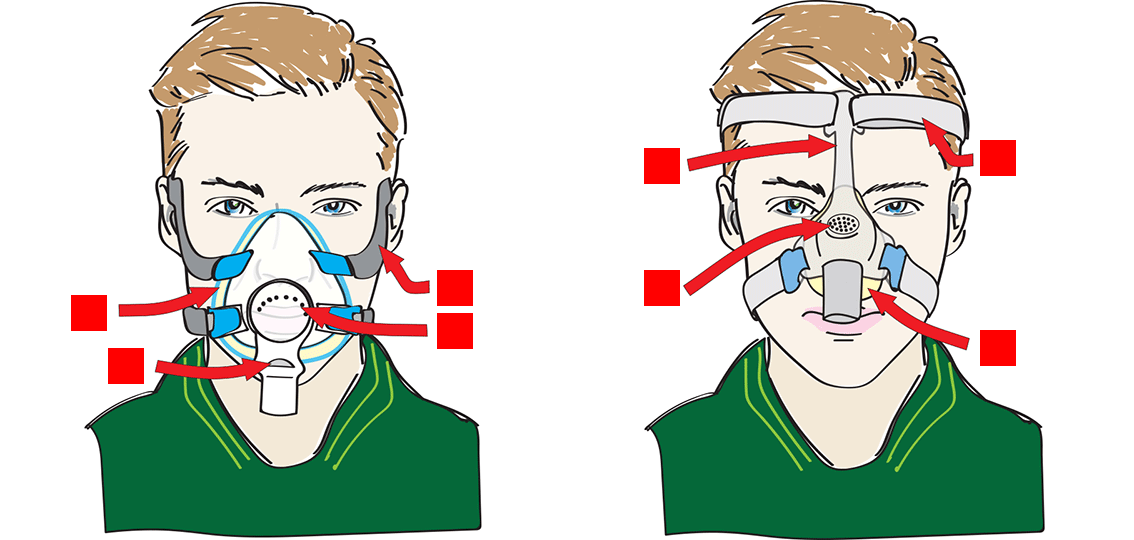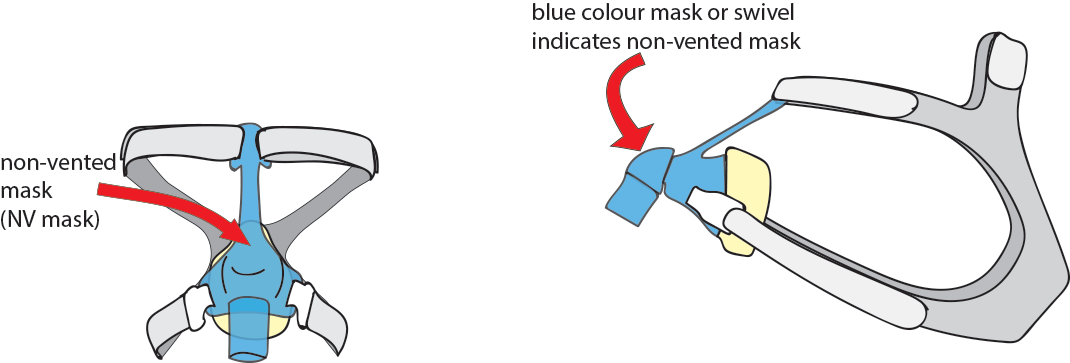Module 2: Breathing with
Mask therapy
Important to know about mask therapy
- Put the mask on correctly and make sure it fits well to avoid leakage around the mask and pressure sores.
- Learn about complications and preventing them.
- Learn how to assemble and disassemble masks and head straps.
- Learn the cleaning routine for the mask.
- Learn how to find the written instructions for the applicable mask and cap/straps.
Masks in general
A good mask might be the most important factor for the success of BiPAP or home mechanical ventilator therapy. Masks must be adapted to the individual and masks are selected in cooperation with the user. The mask must feel comfortable on the face and not rub or cause any pressure. There must not be excessive leakage around the mask. This can result in problems with dryness in the nose and mouth or irritable eyes. Significant leakage can also lead to breathing that is out of sync with the machine, which comprises the effect of the therapy. Avoid any discomfort that could disturb sleep at night.
Most of the factory-made masks currently on the market are made of silicon or gel.
The durability of masks depends on maintenance. Normal consumption is two masks per year. Users who also have mask therapy during the day, should have two different masks to vary the pressure on the face. This can reduce the risk of complications.
There are two main types of masks: masks with exhalation ports for expiration (vented) and masks without such holes (non-vented). It is important to know the difference between these masks and how to use them correctly.
Click on the parts of the masks to learn their names

Masks with holes: BiPAP masks (vented mask)
- The mask has a built-in exhalation port (hole) to expel the air from the lungs out of the mask. This is to prevent re-aspiration of ‘used air’.
- The hole/opening for ventilation is placed in the ’elbow’ or mask shield.
- Thorough washing of the mask is essential to prevent the holes from becoming blocked with dirt.
- All masks that cover both the mouth and nose also have a safety valve (see below).

Safety valve
Masks without holes: Ventilator masks (non-vented)
- These are tight-fitting masks without exhalation holes.
- The valve for controlling exhalation is placed in the ventilator circuit or the ventilator itself.
A blue ‘elbow’ often indicates a non-vented mask:

Ventilator masks (non-vented)